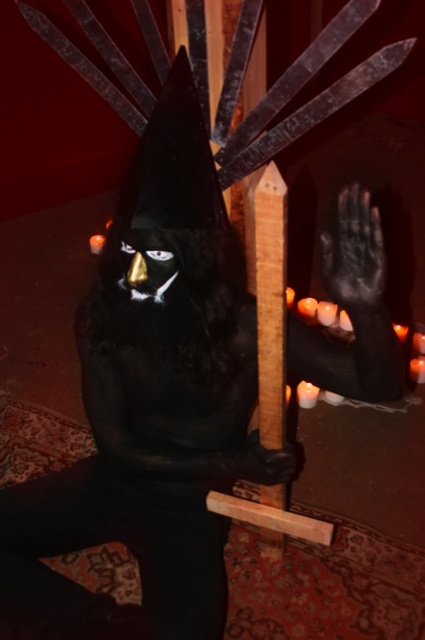 Luigi Presicce, Il mago di Cefalu, 2009, Night performance for two spectators
Luigi Presicce, Il mago di Cefalu, 2009, Night performance for two spectators
The Centre for Contemporary Culture Strozzina in Florence is hosting the second edition of Emerging Talents – Young Italian Art, a prize and exhibition aimed at bringing closer together young Italian contemporary artists, art critics and the broad public. I missed the first edition and didn’t feel the smarter for it. As some of you know, i spend most of my time in Italy and no matter how much i look and inquire, i find it hard to get a broad picture of the young contemporary art scene in a country that tends to be blindsided by big names. A problem i don’t encounter so acutely elsewhere. Cultural institutions in countries such as Germany, France, The Netherlands, England or Belgium, for example, might be far from holding the key to cultural felicity but i often find that they take more pride in showcasing the talent of their young artists (though how long this is going to be the case after the recent drastic cuts in public funding for education and culture is another story.)
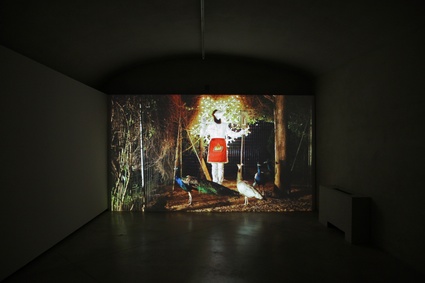 Luigi Presicce, La benedizione dei pavoni, 2010. Exhibition view at Emerging Talents 2011, Centro di Cultura Contemporanea Strozzina, Firenze. Photo: Martino Margheri
Luigi Presicce, La benedizione dei pavoni, 2010. Exhibition view at Emerging Talents 2011, Centro di Cultura Contemporanea Strozzina, Firenze. Photo: Martino Margheri
I’m sure that the brave statement that Franziska Nori and Riccardo Lami wrote in their text for the exhibition catalogue will resonate with many young Italians (or Europeans) interested in culture:
We believe that working on a project with the aim of showcasing the excellence of young creativity is fundamental at a moment in history – and in a social climate – like that of Italy in recent years. The ability to invest in education, culture and research is crucial, representing a moment of truth for the very future of a national community that is facing the need to make the most effective decisions possible in order to keep up with other nations and avoid the progressive decline of its competitiveness with respect to the world and the global market. This problem is not merely Italian, but extends to Europe in general. Nevertheless, we must also note a specific Italian weakness and lack of far-sightedness in managing such a critical transition. Entire generations of young people have no possibilities for a future on what has become an international job market, due to an education that is unable to compete with that of their peers from other countries, as well as the dearth of professional growth opportunities in their homeland.
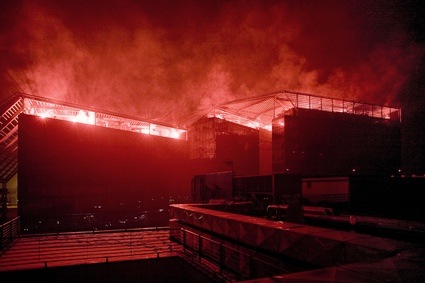 Giorgio Andreotta Calò, Monumento ai Caduti, 2010. Picture of the performative intervention at the new venue of the Municipality of Bologna
Giorgio Andreotta Calò, Monumento ai Caduti, 2010. Picture of the performative intervention at the new venue of the Municipality of Bologna
Four established Italian curators were called to select the candidates for the prize. Each of the curators could select four artists. They had to be Italians and aged 25 to 35. The winner of the Emerging Talents 2011 prize was then selected by an international jury. This year the prize was awarded to Luigi Presicce.
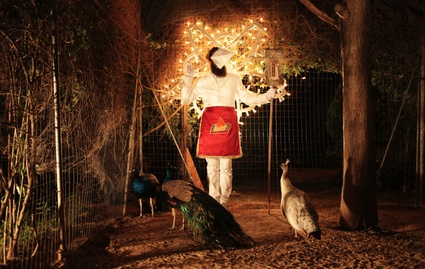 Luigi Presicce, La benedizione dei pavoni, 2010. Performance for two children
Luigi Presicce, La benedizione dei pavoni, 2010. Performance for two children
In a short video interview Presicce expresses his astonishment that an independent artist like him, who isn’t even represented by any art gallery could have won the prize. He’s probably the only person who sees the recognition as a surprise. His performances are little tableaux vivants in which he casts himself as a motionless and mysterious figure. He hides his face behind masks and heavy makeup, surrounds himself with mystical objects and compose scenes evocative of ancient paintings, civilizations or dark figures of modern history. Presicce usually performs in front of a very limited number of spectators. The video presented at Strozzina documents La benedizione dei pavoni (the Benediction of the Peacocks), a performance he made for two children.
Strozzina is showing only that one work and the video only was worth the trip to Florence. I can’t see why i shouldn’t paste below a few images from some of his other works:
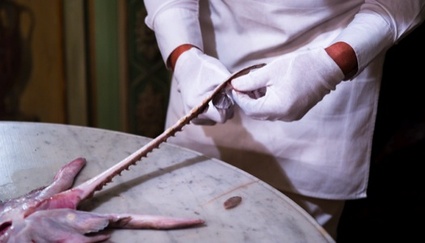
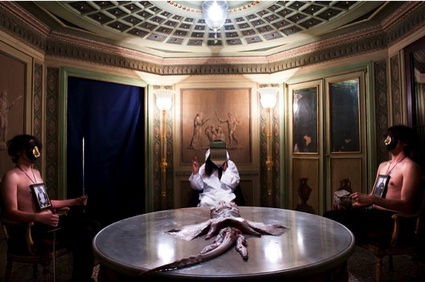 Jenny Haniver Show, 2010. Performance behind closed doors
Jenny Haniver Show, 2010. Performance behind closed doors
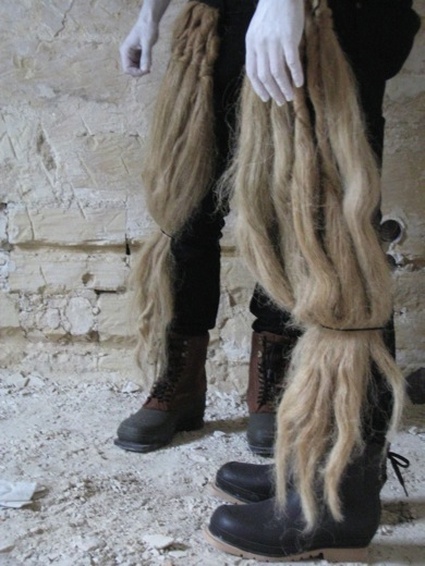 C’e splendore, 2010
C’e splendore, 2010
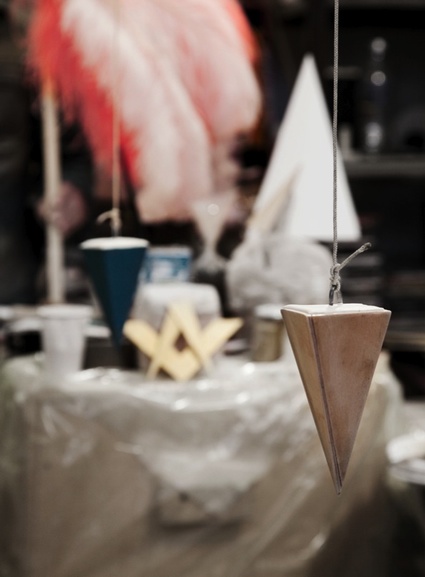
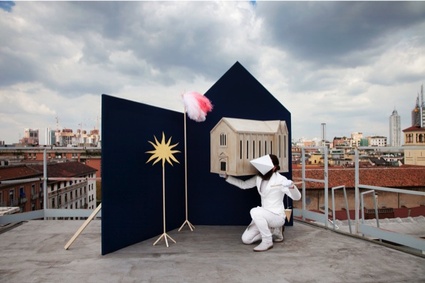 Donazione della cappella, 2010
Donazione della cappella, 2010
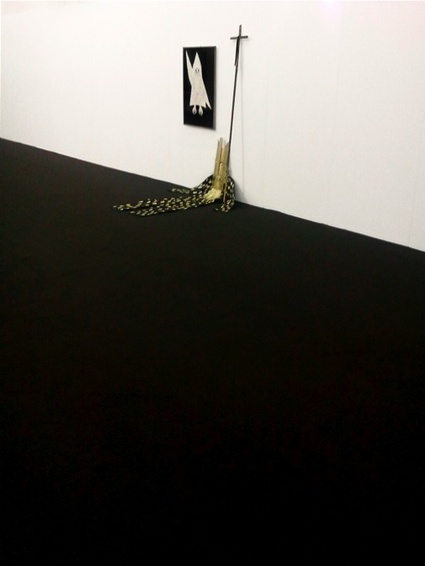 L’alba dei due soli e’ d’oro, 2009
L’alba dei due soli e’ d’oro, 2009
The rest of the show contained more gems.
Alessandro Ceresoli has covered a wall of the main exhibition room with aluminium plates that narrate the story of Alice Auma, a spirit-medium who led a rebellion against the Ugandan government forces of President Yoweri Museveni from August 1986 until November 1987. The narrative starts as an introduction text of the wikipedia entry about Alice Auma and then takes a more allegorical tone.
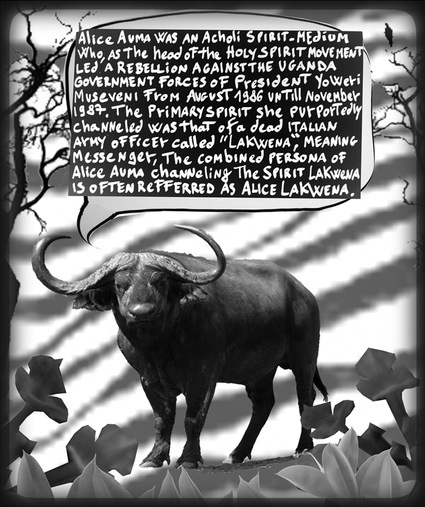 Alessandro Ceresoli, Alice, 2010
Alessandro Ceresoli, Alice, 2010
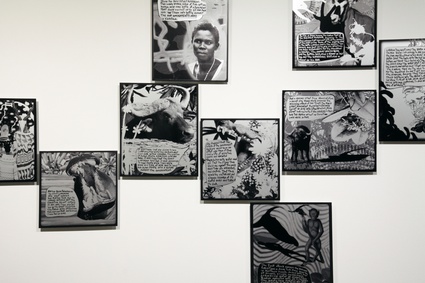 Alessandro Ceresoli, Alice, 2010. Exhibition View at Emerging Talents 2011, Centro di Cultura Contemporanea Strozzina, Firenze. Photo: Martino Margheri
Alessandro Ceresoli, Alice, 2010. Exhibition View at Emerging Talents 2011, Centro di Cultura Contemporanea Strozzina, Firenze. Photo: Martino Margheri
It is hard not to see Loredana Di Lillo‘s Black & White Italian Flag as a pungent comment on the political situation. This year sees the celebration of the 150th anniversary of the unification of Italy. The celebration was contested by the Lega Nord, the powerful Northern League which is part of the coalition currently governing the country. The Lega is pushing forward its a separatist agenda and some of its members are known for walking out when the national anthem is played in public. Any display of the green white and red flag is bound to irk them.
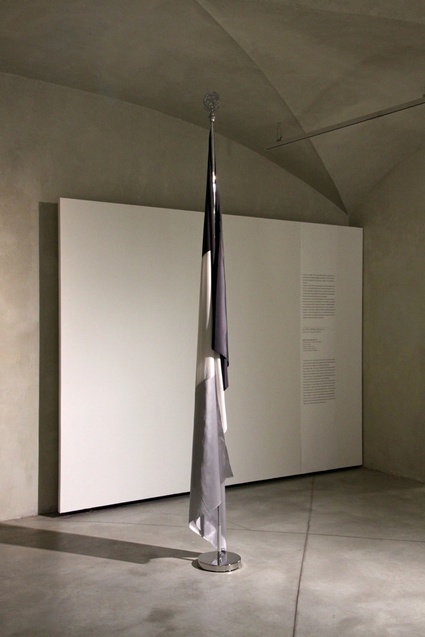 Loredana Di Lillo, Black & White Italian Flag, 2010. Exhibition View at Emerging Talents 2011, Centro di Cultura Contemporanea Strozzina, Firenze. Photo: Martino Margheri
Loredana Di Lillo, Black & White Italian Flag, 2010. Exhibition View at Emerging Talents 2011, Centro di Cultura Contemporanea Strozzina, Firenze. Photo: Martino Margheri
Valentino Diego‘s radios are perfectly silent until you enter the room and unleash a cacophony. Grabbing the antennas with the hands allows you to modulate the sound.
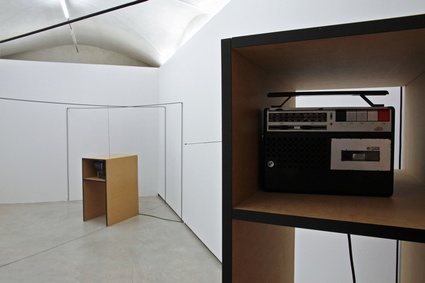 Valentino Diego, Untitled, 2009-2011. Exhibition view at Emerging Talents 2011, Centro di Cultura Contemporanea Strozzina, Firenze. Photo: Martino Margheri
Valentino Diego, Untitled, 2009-2011. Exhibition view at Emerging Talents 2011, Centro di Cultura Contemporanea Strozzina, Firenze. Photo: Martino Margheri
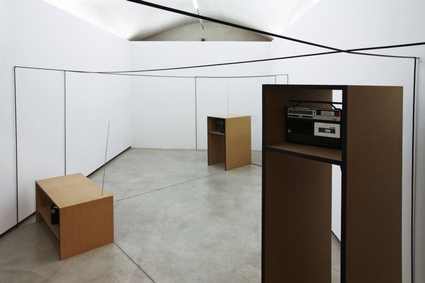 Valentino Diego, Untitled, 2009-2011. Exhibition view at Emerging Talents 2011, Centro di Cultura Contemporanea Strozzina, Firenze. Photo: Martino Margheri
Valentino Diego, Untitled, 2009-2011. Exhibition view at Emerging Talents 2011, Centro di Cultura Contemporanea Strozzina, Firenze. Photo: Martino Margheri
The members of Invernomuto have filled a room with the Bobs. The first Bob is entirely fictional but he’s also the only who is actually called Bob, the second is Uncle Jesse from The Dukes of Hazzard, the third is musician Glenn Danzig.
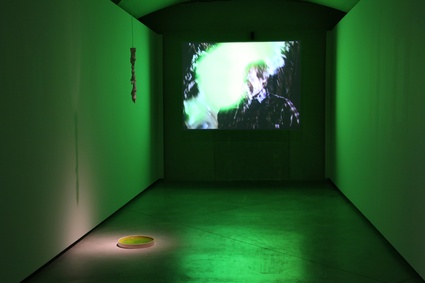 Invernomuto. Exhibition view at Emerging Talents 2011, Centro di Cultura Contemporanea Strozzina, Firenze. Photo: Martino Margheri
Invernomuto. Exhibition view at Emerging Talents 2011, Centro di Cultura Contemporanea Strozzina, Firenze. Photo: Martino Margheri
B.O.B. – CHAPTER TWO from Invernomuto on Vimeo.
Giovanni Ozzola‘s Omnia Munda Mundis looks like a delicate wood painted folding screen until you get closer and realize it’s the photograph of a tree taken at night.
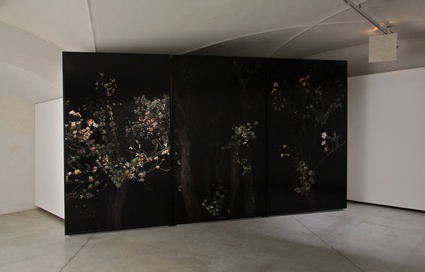 Giovanni Ozzola, Omnia Munda Mundis, 2008. Exhibition view at Emerging Talents 2011, Centro di Cultura Contemporanea Strozzina, Fondazione Palazzo Strozzi, Firenze. Photo: Martino Margheri
Giovanni Ozzola, Omnia Munda Mundis, 2008. Exhibition view at Emerging Talents 2011, Centro di Cultura Contemporanea Strozzina, Fondazione Palazzo Strozzi, Firenze. Photo: Martino Margheri
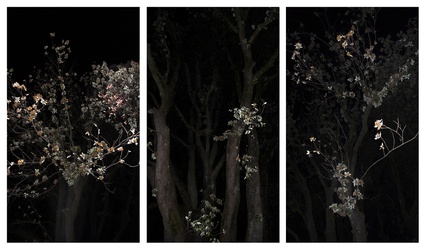 Giovanni Ozzola, Omnia Munda Mundis, 2008
Giovanni Ozzola, Omnia Munda Mundis, 2008
Previously: E13 000625, the sound that hits you in the stomach.
Emerging Talents – Young Italian Art is on view at Centre for Contemporary Culture Strozzina until May 1, 2011.
